Cyclists' guide to high visibility clothing and accessories
Lighting up like a Christmas tree at night is sensible, but making sure you’re as visible as possible in the daytime is just as important
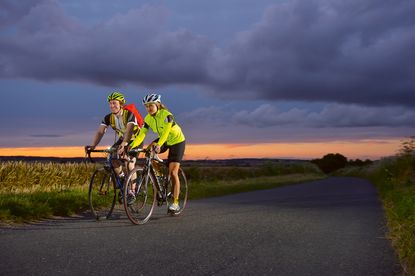
By Hannah Bussey; Photos by Roo Fowler
If you are the proud parent of school-age children, or are a child of the Eighties you are no doubt accustomed to the phrase ‘be bright, be seen’. Hopefully, despite it perhaps appealing to the younger generation, by virtue of the very fact you are still here reading this, you have paid some sort of attention to road safety messages and haven’t been written off by a driver who ‘didn’t see you’.
And seeing as you are busy reading this, we’ll also assume that at some point between childhood and now, you’ve become one of the increasing numbers of people who love riding their bike, be it for pleasure, commuting or both.
With cycling in the UK currently seeing something of a renaissance, it’s great to see so many people riding bikes. Unfortunately, at the risk of sounding like doom-mongers, we’ve also seen an increase in the number of cycling related traffic accidents. Now, no amount of prior precaution is going to prevent every cycling incident or accident, and a combination of reasons contribute to cyclists getting knocked off bikes, but it’s vital to be as road safety savvy as possible — and the ‘be bright, be seen’ message, is still on trend.
How visible are you?
The European Transport Safety Council says that the key problem is “invisibility: cyclists are difficult to see and can be hidden”. It then goes on to say this is the case especially at night, and although statistically you are four times more likely to be knocked off your bike at night it’s worth considering that even in broad daylight you can suddenly find yourself in a tunnel of darkness.
So being visible on the bike isn’t just about being seen while riding at night, it’s just as vital whatever time of day you decide to go for a spin.
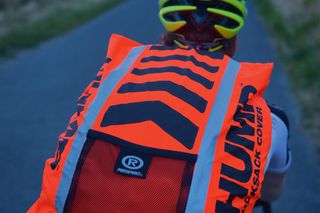
Making sure you and your bike are visible to other road users should take precedence over any other piece of cycling equipment. Colour is an obvious element to introduce into a cycling outfit, but before we charge ahead trying to guess what makes us stand out to other road users, it’s worth understanding a bit of the science behind how we see and what makes some colours more visible over others.
Fundamentals first: the human eye sees differently depending on levels of light. In bright light we rely on cone cells within the eye, and in the dark rod cells (photoreceptors). Cone cells are sensitive to colour, whereas rods are sensitive to light. There are many more rods than cones, but the cones are grouped in the middle of the eye whereas rods are denser further from the central spot. At the stage between night and day — twilight — and at night in urban areas we use a combination of both rods and cones.
It’s also important to understand that it can take up to half an hour for our eyes to adjust from cone to rod cells, but only five minutes for rods to adjust to cones. In other words, going from a bright light into dark takes a lot longer to adjust to than dark into light.
So now we know how we see, it’s important to know what we see. Having lights on a bike is another must-have. But what kind? With towns and cities so built up, there is a lot of information that the brain needs to digest every second in order that you can make basic decisions and function.
Filtering all the information we see in your average street scene, like cars, pedestrians, street furniture etc, is a big ask on the brain. In order to process that information, we kind of fall back on our subconscious decision making process and only move into conscious action when we see something that really catches our attention — such as a flashing emergency light, indicators or indeed flashing bike lights.
It can also be incredibly difficult to make judgments of distance on static or constant objects if moving directly towards you or away from you. This can explain why you sometimes find a car suddenly uncomfortably close behind you despite you feeling that they had plenty of chance to see you.
The trick is getting the right combination of colours and equipment to make sure you not only stand out from the background, but also make a driver aware that you are moving at a reasonable speed too.
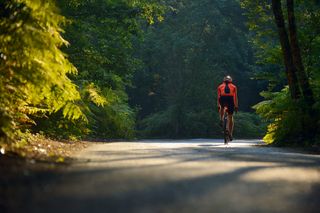
Into the light
Knowing what we do about colours and light, it’s easy to assume that during the day we should follow the Tour de France leader and don a yellow jersey and job done — we’re plenty visible enough… aren’t we?
During the day, fluorescent colours work best. This is because the sun’s ultraviolet rays react with the colours and make them appear to ‘glow’. If you did grow up in the Eighties, then the thought of decking yourself out in fluoro colours for the first time in nearly 30 years may fill you with dread. You’ll be pleased to know that neon colours are making big waves on the high street at the moment and this trend has already trickled down to the cycling world. So you can wear it without fear of being a social outcast — but this does not mean you have the right to dive to back of the wardrobe and retrieve your garish get-up from the ‘nu rave’ era.
Simply introduce a bit of colour to make you stand out on the road. Whether it’s a full fluoro set of kit or a more subtle nod, bright green, yellow or orange colours really will stand out to the naked eye.
However, it’s worth remembering that even on a beautiful sunny day on a quiet country road, entering into a tunnel of greenery can potentially plunge you into darkness and make you practically indistinguishable from the background. Underpasses and bridges also create the same tunnelling effect, making you less visible and vulnerable to other traffic on the road.
Seeing as it takes so long for the human eye to adjust to dark conditions, it’s worth thinking about using a rear light throughout the day. Not only will this generally contribute to daytime visibility for other road users, but it will also make you illuminated when you enter a dark area such as a wood or an underpass.
With lights seeing one of the biggest technological advancement in recent years, the size, weight, battery life and cost means that there really isn’t any excuse not to be lit up all day. The common UK consensus is that a flashing light is more conspicuous than a steady (constant) light, and that fits with our understanding of how the brain works, so choose that option to help combat the illusion of being stationary to drivers, or indeed riders, of faster vehicles.
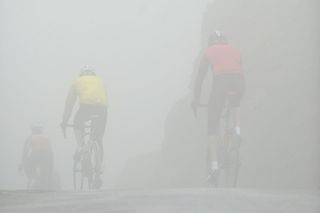
Be bright, be seen
Lights
There are literally hundreds of small, easy-fix rechargeable lights out there to choose from. Help narrow down your search by looking out for:
Flashers — Have a light with a flashing option during the day or consider attaching a couple front and back; set one on constant and the other on flashing.
Pairs — choosing a package or an obvious pairing where there is a front and back light combo can make it simple to recharge as they will use the same charging cable and/or batteries (if and when they do need replacing) and often also follow a similar light pattern cycle so will be easy to use.
USB recharging option — enabling you to charge both lights at home, your desk or from the laptop on the way home from work.
Clothes
It’s important to note that just because something is brightly coloured, it does not mean that it can be deemed as safety equipment. In order for something to be classified as personal protective equipment it needs to meet EU-regulated standards. Clothing and equipment that does meet these standards will carry the official CE mark of either Standards EN471 or EN1150.
Assuming that you are not rigidly sticking just to the CE safety mark, here’s our guide on how to stand out on the bike wearing a healthy balance of bright colours, without being arrested by the fashion police.
Fluoro — As we’ve already mentioned, fluorescent clothing definitely stands out under UV light, and with few things in nature being quite so bright, you certainly won’t be camouflaged!
Reflective — Unlike fluoro clothing, reflective clothing works under an artificial light source, like street or headlights. As reflective clothing works by reflecting light back to the source, the more direct the light beam, the more effective the reflection.
Accessories
Add even more colour by accessorising, lights, and reflection via gloves, helmet and shoes. If you’re wearing a rucksack, choose a brightly coloured one with reflective elements. Anything that makes you obvious and stands out, and as long as it doesn’t obscure other road users’ vision, then ride it!
Recommended clothing and accessories
Lights
Lezyne LED Micro Drive front & rear £39.99 each.
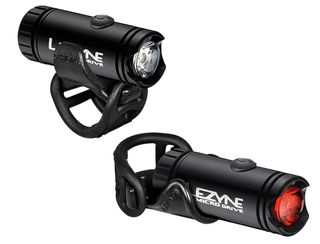
Moon Comet front and rear set £55.99
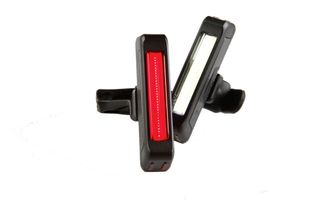
Neonight £59.99 for two
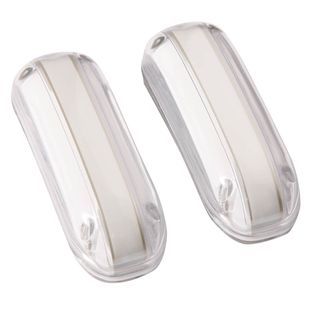
Clothing
Altura Night Vision Jersey £39.99
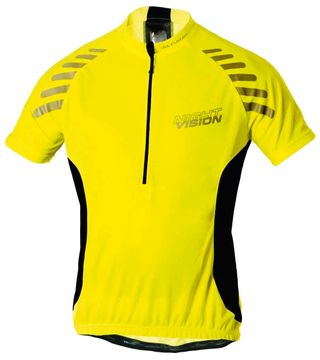
Altura Women's Night Vision Jersey £39.99
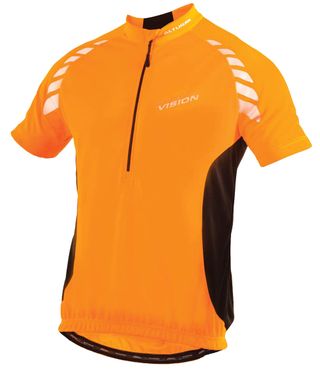
Northwave Apparel Wind Pro Jacket Windshield High+ £49.99
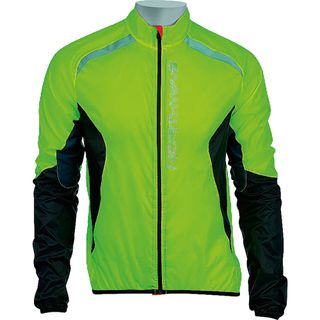
Accessories
Respro Hump Back Pack Cover £32.99
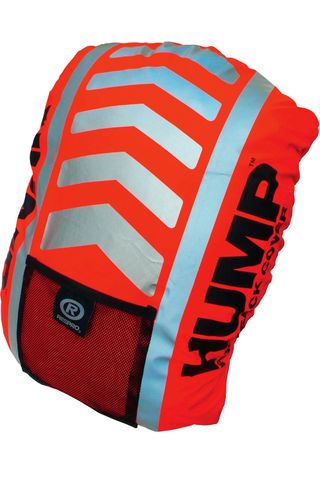
Proviz Vest Light Emitting High Visibility £35.99
More articles

Winter cycling clothing: everything you need to stay warm
To help you prepare for the winter blues with hand picked a number of winter cycling garments to make those

Best bike lights: best front and rear road bike lights
Your essential guide to buying bike lights, including how much to pay, the essential features you need, and our pick

Thank you for reading 20 articles this month* Join now for unlimited access
Enjoy your first month for just £1 / $1 / €1
*Read 5 free articles per month without a subscription

Join now for unlimited access
Try first month for just £1 / $1 / €1
Get The Leadout Newsletter
The latest race content, interviews, features, reviews and expert buying guides, direct to your inbox!
-
 You can now own a new Pinarello race bike for just £3000 - so what's the catch?
You can now own a new Pinarello race bike for just £3000 - so what's the catch?Pinarello's new F1 retails for just £3000/$3500 - has the Italian superbike manufacturer just become a value brand?
By Joe Baker Published
-
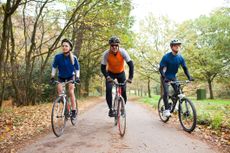 The fatality rate for cycling is disproportionately high - but the health risks of letting cars do all the work are far greater
The fatality rate for cycling is disproportionately high - but the health risks of letting cars do all the work are far greaterFar too many of us know the dangers of riding a bike, but that shouldn’t put us off it
By Adam Becket Published
-
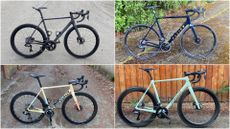 Made in the USA: Four of the best domestic carbon bicycles you should know about
Made in the USA: Four of the best domestic carbon bicycles you should know aboutOffering an alternative to bikes made overseas, these smaller operations are making high-quality carbon bikes closer to home
By Tyler Boucher Last updated
-
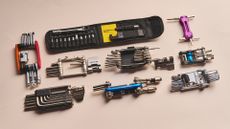 The best bike multi-tools 2024: Function-packed tools for every ride
The best bike multi-tools 2024: Function-packed tools for every rideThe best cycling multi-tools will solve the majority of your on-bike mechanical problems
By Paul Norman Last updated
-
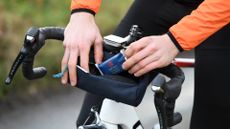 Best handlebar bags 2024
Best handlebar bags 2024The best handlebar bags will let you carry a good proportion of your bikepacking gear or just your extras for a day ride
By Stefan Abram Last updated
-
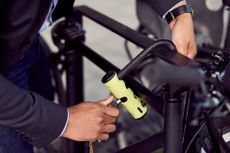 Best bike locks 2024: heavy duty and portable locks for keeping your bike safe
Best bike locks 2024: heavy duty and portable locks for keeping your bike safeIf you love your bike you will need one of the best bike locks if you plan to leave your bike unattended - We have tested the best bike locks for securing your pride and joy
By Matt Ischt-Barnard Last updated
-
 Best protein-loaded recovery drinks for cycling 2024 rated and reviewed
Best protein-loaded recovery drinks for cycling 2024 rated and reviewedWe look at the best available protein and recovery drinks to ensure you’re recovered and good to go for your next training session
By Andy Turner Last updated
-
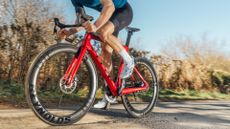 Best road bike wheels reviewed and rated: disc and rim wheelsets to supercharge your ride
Best road bike wheels reviewed and rated: disc and rim wheelsets to supercharge your rideOur complete guide to what to look for in the best road bike wheels
By Paul Norman Last updated
-
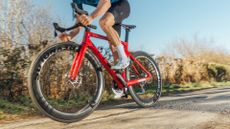 Best aero bikes 2024: fastest speed weapons ridden and rated
Best aero bikes 2024: fastest speed weapons ridden and ratedWe've ridden and rated the best aero bikes and these are our favourites
By Paul Norman Last updated
-
 The best summer cycling clothing for 2017
The best summer cycling clothing for 2017Summer is here so it's time to dress properly for the warmer weather. Our buyer's guide can help you make all the right choices when it comes to summer cycling kit
By Henry Robertshaw Published